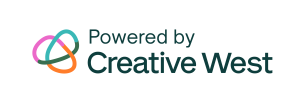Incorporating equity into your grantmaking strategy is most valuable when weaving the consideration of diverse experiences and perspectives through every step of the grantmaking process. What are some practical approaches to centering equity in your grantmaking practice and development? Here are GO Smart’s four favorite tips:
- Ensure BIPOC-led organizations are part of your funding.
This is a vital step to identifying equity gaps within your current funding strategy and producing real change when it comes to addressing systemic issues. Is your organization taking steps to reach diverse candidates that may not otherwise have the resources available to apply for funding? By tracking these efforts from the earliest stages of the grantmaking process, you can help to ensure that your foundation is closing any existing gaps in the process in order to reach those organizations or individuals that would most likely have missed out on securing valuable and much-needed funding.
- Pay attention to the accessibility of your application.
Take a closer look at the steps and overall workflow of your current or past applications to ensure equitable access to every potential grantee. While this will undoubtedly be an ongoing process, grantmakers approaching this work with the goal of gaining access to perspectives from a diverse pool of grantees are creating valuable space for capacity building. If you aren’t sure where in the grantmaking process to begin diving into this work, start at the very beginning when brainstorming who your grant will serve. Incorporate intentionality into the questions you ask potential grantees, so that future applications are structured in a way that effectively advances your organization’s diversity, equity, inclusion, and accessibility (DEIA) efforts.
In a similar vein, keeping questions clear and concise can help save potential grantees and your board or review panel valuable time in both completing and reviewing applications. This includes removing highly technical language from your applications and ensuring that all questions are easily understood. Another helpful tip is to tell applicants up front how long they can expect completing the application to take. This way, applicants will have a better idea of how much detail they may need to go into, allowing them to better prepare ahead of time.
- Keep organizations of all sizes in mind when creating timelines.
While not all organizations rely on tight turnaround times for funding, many smaller organizations and individuals do rely on grants that have short turnarounds and simplified application processes. These types of grants can make all of the difference for those with fewer financial resources available to be able to keep their doors open when faced with unforeseen circumstances.
Examine your organization’s previously funded organizations and projects as well as your due diligence policy for existing gaps in overall funding composition. Are the majority of organizations funded those with larger capacity or are more well-resourced? Are under-resourced organizations or communities being reached through your current grantmaking efforts? This is essential to deepening understanding of and advancing the work of historically under-represented and under-resourced communities and the organizations that seek to serve them.
- Go beyond the metrics.
From everything to streamlining processes for your grantees to making space for communities to grow, developing a relationship with your grantees and their program staff is one of the most valuable ways to interpret grantmaking data into something more meaningful than metrics. By getting to know your grantees outside of typical grantmaking processes, you open many doors to potentially transformative initiatives in under-resourced communities. Your organization may even consider implementing capacity building grants that would include professional development, infrastructure building, or other program development opportunities to help guide these smaller organizations through the processes of constructing the most effective programs for their communities.
We hope you find these tips helpful in creating or building on a solid foundation for your current grantmaking strategy. Opening the door to conversations with your grantees and other constituents can be one of the most powerful catalysts toward enhancing your organization’s policies and practices which, in turn, will strengthen your impact in the communities you serve.


